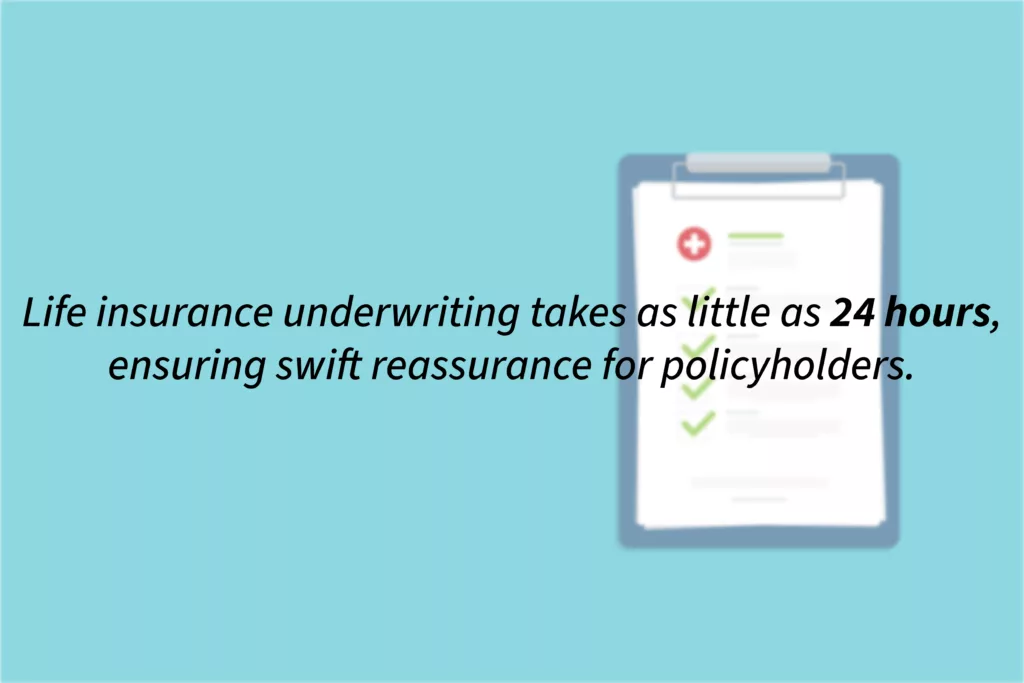Blog Details
Understanding Life Insurance Underwriting Process: A Comprehensive Guide
In the realm of insurance, the concept of life insurance underwriting stands as a cornerstone, shaping the landscape of risk assessment and policy issuance. It’s a pivotal process wherein insurance companies meticulously analyze an individual’s risk profile, financial stability, and health status to determine the viability of issuing a policy. Let’s delve into the intricacies of this crucial procedure to grasp its significance and functioning.
Deciphering Life Insurance Underwriting
Life insurance underwriting serves as a structured evaluation mechanism employed by insurance providers to assess the risk associated with an individual seeking coverage. This assessment relies on a myriad of factors, ranging from age and gender to medical history and lifestyle choices. Upon submitting an application for life insurance, it undergoes scrutiny through the lens of underwriting, facilitated by appointed underwriters tasked with scrutinizing the applicant’s particulars.
The Essence of Underwriting in Insurance
The crux of underwriting lies in its role as the bedrock of the insurance sector. By meticulously scrutinizing risk factors, underwriters ascertain the appropriate level of coverage vis-a-vis the premium, ensuring a fair and equitable distribution of risk among policyholders. Failure to conduct thorough underwriting not only jeopardizes the financial health of insurance companies but also impacts policyholders, potentially leading to unjustifiably high premiums or inadequate coverage.
Types of Underwriting in Insurance
Underwriting in insurance encompasses two broad categories, each addressing distinct facets of risk evaluation:
1. Financial Underwriting
Financial underwriting revolves around assessing an applicant’s financial standing and determining the suitability of the policy amount vis-a-vis their circumstances. This ensures that the coverage aligns with the applicant’s financial capabilities and needs, fostering a symbiotic relationship between risk and coverage.
2. Medical Underwriting
Medical underwriting constitutes a pivotal aspect wherein the applicant’s medical history undergoes scrupulous examination to gauge health-related risk factors. This evaluation, premised on lifestyle choices, health conditions, and demographic data, plays a pivotal role in determining the policy’s cost and coverage extent.
Unveiling the Underwriting Process in Life Insurance
The underwriting process in life insurance unfolds through a series of meticulously orchestrated steps, facilitated by a plethora of documentation and assessments:
– Quality Check of Application
The initial phase entails a meticulous review of the applicant’s submitted documentation, ensuring completeness and accuracy in detailing crucial information.
– Medical Examination
A pivotal aspect of underwriting involves conducting comprehensive medical examinations, ranging from blood tests to physical assessments, aimed at gauging the applicant’s health status and associated risks.
– Final Rating and Policy Offer
Following exhaustive scrutiny of the applicant’s profile, the underwriter assigns a rating, paving the way for the issuance of a policy proposal. At this juncture, applicants may negotiate terms or proceed with acceptance, culminating in the formalization of the policy agreement.

Understanding Factors in Life Insurance Underwriting
An array of factors comes under the underwriter’s purview during risk assessment, each wielding significant influence on premium determination:
– Age
Age serves as a pivotal determinant, with younger applicants typically deemed less risky than their older counterparts, reflecting lower mortality probabilities.
– Health Conditions
Pre-existing health conditions significantly impact risk assessment, potentially resulting in elevated premiums or policy denials, contingent upon severity and implications.
– Weight and BMI
Body weight and BMI metrics play a pivotal role in gauging health risks, with overweight or obese individuals facing heightened scrutiny and potentially elevated premiums.
– Family Medical History
Akin to individual health conditions, familial medical history serves as a critical determinant, shedding light on hereditary risk factors and potential health predispositions.
In Conclusion
Life insurance underwriting epitomizes the essence of informed risk management, offering both insurers and applicants a pathway towards equitable risk distribution and optimal coverage. By comprehensively evaluating risk factors, underwriting ensures a judicious balance between risk and reward, underpinning the resilience and efficacy of the insurance landscape.
When contemplating life insurance, navigating the underwriting process emerges as a crucial imperative, guiding individuals towards informed decision-making and securing their financial futures. Embrace the underwriting journey with confidence, empowered by the assurance of tailored coverage and prudent risk management.


